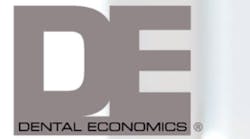Dr. Michael Kesner says, "When we simplify our communication to include only those things that are important to the patient’s decision-making process, case acceptance increases."
I’ll bet this happens in your office every day: You finish a comprehensive exam on “Mrs. Jones.” You sit her up in the dental chair and begin to educate her on the problems you found in her mouth. You explain how you would recommend treating those problems.
How much do you think Mrs. Jones will recall about what you have just told her? How much will she retain by the time she gets in her car? How much will she remember tomorrow, or even the next day?
If you happened to use some dental vocabulary that she did not understand, do you think she will retain more or less of what you just said? If she is nervous because she is afraid of the dentist, do you think her retention will increase or decrease?
There is some uncertainty as to exactly how much people remember what they hear. Depending on who you read, recall is said to be anywhere from 5% to 20%. Whatever the exact percentage, we do know that people forget most of what they hear.
Since your patients remember very little of what you say, you should probably choose very carefully the information that you tell them.
For example, how important is it for your patient to know what composite filling material consists of, or how it bonds to the tooth? Is it important for your patient to know about gutta-percha or how a root canal is done? Why would it be important to teach your patients dental vocabulary, such as interproximal carious lesion or necrotic pulp or periapical abscess? Would they better remember and understand, “You have a cavity between your teeth and pus in your bone”? Is it truly important for your patient to understand the difference between zirconia and e.max crowns?
If my patient asks these specific types of questions, I will answer them. But I don’t volunteer unnecessary dental information. I want my patients to remember what is important in helping them make a decision regarding their dental treatment. The more unnecessary information I give them, the less necessary information they will remember.
I want my patients to remember these three things: First, what is the problem? Second, what is going to happen if they choose not to fix that problem? And third, what is the solution to the problem? I want my patients to hear these three things several times during their appointment. We all know that if we hear something more than once, then our chances of remembering increase significantly. Therefore, I can somewhat control their ability to retain what I say through the use of repetition.
Out of the three things listed above, the second one is the most important for patients to remember. If they forget everything else I told them, I want to make sure they remember what is going to happen if they don’t fix this particular problem. I want them to know how the problem will get worse, cost more to fix, possibly be painful, and be inconvenient if they don’t get it fixed. I talk more about the negative consequences of doing nothing than about what the problem is or how I am going to fix it.
If your patients understand the negative consequences of no treatment, then they are more apt to choose the dental treatment you recommend. Everyone wins when your patients choose the treatment they need.
I find that most dentists emphasize number three - the solution to the problem - more than they should. Fixing the problem is what we as dentists enjoy the most, so we typically talk about this aspect more than we should. We often give too much information, too much detail, and too much dental jargon in our explanations. This leaves patients confused and overwhelmed.
Patients usually are not very interested in all of the details about how the problem will be fixed. The process may sound scary, boring, or confusing to them. I find that scared or confused patients usually say, “Well, doc, I’ll think about it.”
When we simplify our communication to include only those things that are important to the patient’s decision-making process, case acceptance increases. Too much information is counterproductive, especially when we know that patients are going to forget most of what we tell them anyway. Changing the way we and our team members communicate with patients can help them remember the important things that are necessary to make the right decisions for their health.
Michael Kesner, DDS, has a practice that ranks on the Inc. 5000 list as one of the fastest growing companies in America. He is the author of Multi-Million Dollar Dental Practice and the CEO of Quantum Leap Success in Dentistry, which teaches more production, higher profits, and less stress. Contact him at [email protected].






